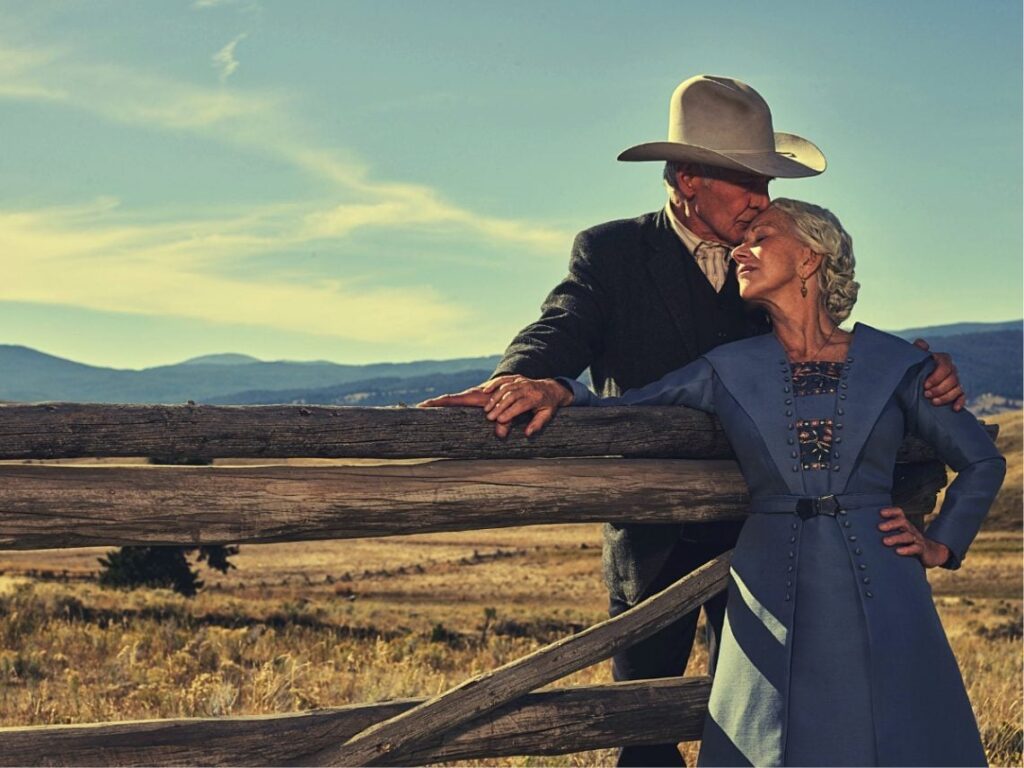Why are westerns thriving on TV but struggling at the movies?
 Posted On
Posted On
(Credit: Paramount)
The humble western is one of the oldest and most reliable genres of Hollywood storytelling. Tales of the rootin’ tootin’ Old West were hugely popular with audiences in the movie business’ golden age, and over the years, viewers also embraced many of the darker, more morally compromised revisionist westerns that were made. However, the popularity of the cinematic western has ebbed and flowed over the years as different audiences have come of age.
Everything in life is cyclical, and no genre is popular all the time, of course, so many observers would simply say the western is merely waiting for its time to come to prominence again. Here’s the thing, though: westerns have actually been hugely popular in the 2020s – it’s just not been on the big screen.
American Primeval, a truly gritty and gruesome western series directed by Lone Survivor’s Peter Berg, recently debuted on Netflix. It told an excessively violent tale of the clash between the Church of Jesus Christ of Latter-day Saints and the American government in the Utah territory in 1857, featuring multiple bouts of bloody violence, scalpings, sexual assaults, and torture in almost every episode. This is the western at its most primal – and it’s proved hugely popular. In its first two weeks of release, the show attained 24.7 million viewers and hit number one on Netflix’s Top Ten list.
In truth, though, Berg’s claret-soaked series isn’t the only western that has racked up enormous audience figures in the last few years. Taylor Sheridan’s Yellowstone universe is the most obvious success story, as that modern-day Kevin Costner rancher epic has broken countless viewing records for Paramount and spawned two spinoff shows – 1883 and 1923 – that star luminaries like Sam Elliott, Harrison Ford, and Helen Mirren. In addition to Yellowstone, though, other networks and streamers have brought audiences in with neo-westerns such as Outer Range, Dark Winds, Joe Pickett, and Walker, while shows like Godless and The English have also split the difference between classic and revisionist westerns.
By contrast, the recent history of the western on the silver screen is a story of apathy and failure. Despite legions of fans loving his performance as John Dutton in Yellowstone, very few of them turned up to see Horizon: An American Saga – Chapter One in cinemas. In fact, Horizon – the first chapter of Costner’s purported four-part epic – tanked so badly that the release of Chapter Two was delayed, and the future of the third and fourth parts is still up in the air.
In truth, the only hit big-screen westerns of the past 30+ years are the Coen Brothers’ incredible True Grit remake from 2010 and Quentin Tarantino’s Django Unchained. On the list of highest-grossing westerns ever, Costner’s 1990 Oscar winner Dances with Wolves is still number two, with number three being 2013’s The Lone Ranger – widely seen as one of the biggest money losers in Disney’s history. Plenty of westerns are still made in the modern market, but few are substantial productions with the backing of major Hollywood studios. Instead, it’s predominantly become the territory of the indie movie, with little-seen efforts like 2021’s Old Henry being a good example.
So, why have westerns been dying on the big screen, while simultaneously thriving on television? Why are millions of people excited to watch Costner every week at home but have little desire to see him gunslinging in their local cinema? Well, Costner himself has a theory – and it explains why he wanted Horizon to be a four-part epic instead of one three-hour movie.
“I’ve always believed a good western isn’t always just rushing towards its gunfight,” Costner told People magazine in 2022. “If you can create language and situations, and then you end up at a gunfight, I think it can be an amazing movie or TV show. But I think if you’re trying to get there so fast that you don’t understand the people, or it’s not complicated, then it’s a problem. Most Westerns aren’t very good because they reduce themselves to the black hat and the white hat.”
Is Costner right? Expounding on his theory, it would mean that the reason westerns are succeeding so much on TV is because creators, actors, writers, and audiences can spend so much longer with the characters. Instead of trying to cram a host of different characters and their nuanced motivations into one film, they’re being given the time and space to breathe over multiple episodes and seasons. While Costner might be onto something here, it seems likely that this isn’t the sole reason westerns are struggling at the movies.
Another theory is that westerns operate differently than most modern movie genres – even the ultra-violent ones. Westerns tend to be slower-paced than most action movies, favouring stunning vistas and morally compromised characters who do everything to avoid being drawn into the action. They eventually tend to build to a grand finale, but perhaps this isn’t to the tastes of modern audiences. On television, though, this slow build isn’t as much of a hindrance because the audience knows there are many episodes in a series – so they won’t panic if each one isn’t filled with wall-to-wall horseback chases and saloon brawls.
In the end, though, could the answer be much simpler than this? Is the root of the issue simply the fact that convincing people to go to the cinema for anything that isn’t a superhero blockbuster or a big-budget IP adaptation has become harder than ever? With the rise of streaming TV, with a whole world of content at a customer’s fingertips, maybe audiences have just decided they can scratch their western inch with a show instead of traipsing out into the wilderness to see a movie. Unfortunately, that sounds depressingly plausible to this cowboy.
[embedded content]
Related Topics


